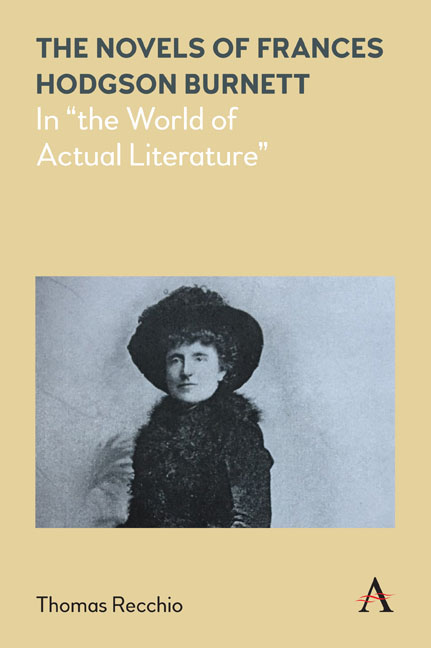Book contents
- Frontmatter
- Contents
- Acknowledgments
- Introduction
- Chapter One Learning from Elizabeth Gaskell
- Chapter Two Writing as an American: The Portrait of a Washington Lady
- Chapter Three Historical Dreamscapes and the Vicissitudes of Class: From A Lady of Quality to The Methods of Lady Walderhurst
- Chapter Four Transatlantic Alliances in The Shuttle and T. Tembarom
- Chapter Five After the Great War: Emerging from the Wasteland in The Head of the House of Coombe and Robin
- Bibliography
- Index
- Frontmatter
- Contents
- Acknowledgments
- Introduction
- Chapter One Learning from Elizabeth Gaskell
- Chapter Two Writing as an American: The Portrait of a Washington Lady
- Chapter Three Historical Dreamscapes and the Vicissitudes of Class: From A Lady of Quality to The Methods of Lady Walderhurst
- Chapter Four Transatlantic Alliances in The Shuttle and T. Tembarom
- Chapter Five After the Great War: Emerging from the Wasteland in The Head of the House of Coombe and Robin
- Bibliography
- Index
Summary
Most well known today as the author of the children's classics The Secret Garden (1911), A Little Princess (1905) and, perhaps still infamously, Little Lord Fauntleroy (1886), Francis Hodgson Burnett was for most of her career a serious and ambitious writer of adult fiction. Her first two novels, That Lass O’Lowries (1877) and Haworth's (1879), garnered strong critical reviews, American periodicals pairing those novels with George Eliot's and Henry James’s and announcing in the process the emergence of a significant new voice on the American literary scene. That Lass O’Lowries was reviewed with James's The American in the North American Review in 1877, and the Southern Review in its 1879 review of that novel opined that “Mrs. Burnett […] has come to take the first rank among living American novelists” (n.p.). That same year the North American Review paired Eliot's The Impressions of TheophrastusSuch with Burnett's Haworth’s; the review states: “When a new writer arrives who is indeed a new voice, and not a confused echo of voices already familiar, the first office of the critic is to ask what results characterize his work and by what methods he achieves his results or makes his impression. Mrs. Burnett […] has proved herself a distinctly new personality among our novel- writers.” Though both reviews seem to concur in their high evaluation of the literary quality of Burnett's early novels, presenting them as vehicles of a distinctive voice that mark Burnett as the preeminent novelist of her time (note the absence of the qualifier “woman” novelist in the first review), there is some suggestive slippage in the language of the second review as Burnett is relocated from the “first rank” of novelists to a “distinctly new personality among novel- writers.” First- rate novelist, new writer, distinct personality: taken together, the blurriness of such terms captures the way in which Burnett may be said to have oscillated within the Anglo- American literary field between 1877 and 1924. If one review locates her at the top of the field of literary production, another seems to concur but fudges, shifting terms from novelist to writer and, by implication, from author to personality.
- Type
- Chapter
- Information
- The Novels of Frances Hodgson BurnettIn "the World of Actual Literature", pp. 1 - 22Publisher: Anthem PressPrint publication year: 2020



